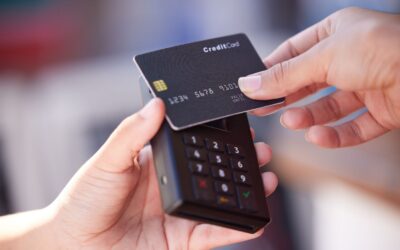Mastering bank account verification: detailed methods, benefits, and challenges
In an era where digital transactions dominate the financial landscape, ensuring the security and legitimacy of these transactions has become paramount. At the heart of this security lies the process of bank account verification—a critical measure that confirms the validity and ownership of bank accounts. Whether you’re a business processing payments or an individual setting up direct debits, bank account verification is essential to safeguard against fraud, errors, and compliance breaches. This blog post delves deeply into what bank account verification entails, why it’s crucial, how it works, and the various methods used to carry it out effectively.
What is bank account verification?
Bank account verification is a process employed by financial institutions and businesses to confirm that a bank account is valid and belongs to the individual or entity claiming ownership. This process is pivotal in many financial activities, including setting up new accounts, processing payments, and facilitating funds transfers.
At its core, bank account verification ensures that the information an account holder provides matches the details their bank holds. This includes verifying the account number, the sort code, and, in some cases, additional information such as the account holder’s name. The primary goal is to prevent fraudulent activities, such as identity theft, and to ensure that payments are sent to and received from legitimate accounts.
Applications for bank account verification
Bank account verification is used in various scenarios. For businesses, it’s a critical step in onboarding new customers, setting up direct debits, and processing online payments. Individuals often require it when establishing new banking relationships or making significant transactions. By verifying bank accounts, businesses and consumers can trust that their financial dealings are secure and accurate.
Why is bank account verification important?
The importance of bank account verification cannot be overstated in today’s financial ecosystem. As the volume of online and automated transactions grows, so does the potential for fraud and error. Bank account verification is a crucial checkpoint that helps mitigate these risks and ensures that financial transactions are conducted smoothly and securely.
Fraud prevention
One of the primary benefits of bank account verification is its ability to prevent fraud. Financial institutions can reduce the likelihood of unauthorised transactions by confirming that a bank account is valid and belongs to the correct person or entity. This is especially important in online banking, where the risk of fraud is higher due to the absence of face-to-face interactions. Verification processes, such as micro-deposits or instant verification via APIs, add an extra layer of security, ensuring that only legitimate transactions are processed.
Compliance with regulations
Bank account verification is also key in meeting regulatory requirements, particularly concerning KYC (Know Your Customer) and AML (Anti-Money Laundering) regulations. These regulations mandate that financial institutions verify the identity of their customers to prevent illegal activities such as money laundering and terrorist financing. By verifying bank accounts, institutions can ensure they comply with these regulations, avoiding hefty fines and reputational damage.
Enhancing transaction accuracy
Errors in financial transactions can lead to significant issues, including delayed payments, failed transactions, and even legal disputes. Bank account verification helps minimise these errors by ensuring that the account details provided are accurate and up-to-date. This protects the parties involved in the transaction and enhances the financial system’s overall efficiency.
How does bank account verification work?
Bank account verification can be done using several methods tailored to specific needs and contexts. These methods range from traditional techniques, such as micro-deposits and document-based verification, to modern solutions like API-driven instant verification. Understanding these methods is essential for businesses and individuals alike, as each has advantages and potential drawbacks.
Instant verification
Instant verification is a modern approach that leverages APIs to validate bank account information in real time. This method is prevalent among businesses requiring immediate account details confirmation, such as online retailers or subscription services. The process typically involves the account holder logging into their online banking portal via a secure third-party interface. Once logged in, the system can verify the account details instantly, ensuring that the account is active and belongs to the correct individual or business.
Advantages of instant verification
The primary advantage of instant verification is speed. Because the verification occurs in real-time, businesses can process transactions or onboard new customers immediately. This improves customer satisfaction and reduces the risk of errors if outdated or incorrect information is used. Furthermore, because instant verification is conducted through a secure, token-based system, it minimises the need for customers to share sensitive information, thereby reducing the risk of data breaches.
Micro-deposit verification
Micro-deposit verification is a more traditional method that involves sending small amounts of money (usually less than £1) to verified accounts. The account holder must then confirm the exact amounts of these deposits by checking their bank statement or accessing their online banking account. This confirmation process verifies that the account holder has access to the account and that it is active.
Strengths and limitations
While micro-deposit verification is reliable and widely accepted, it has some limitations. The process can take several days to complete, as the deposits must be cleared before they can be confirmed. This delay can be problematic in situations where quick verification is required. Additionally, the method primarily verifies the account’s ability to receive payments rather than confirming the account holder’s identity. Despite these drawbacks, micro-deposit verification remains a valuable tool for businesses that do not require immediate verification.
Document-based verification
Document-based verification involves submitting official bank documents, such as statements or voided cheques, to confirm the account holder’s identity and account details. This method is often used in high-stakes financial transactions, such as mortgage applications or large business contracts, requiring higher scrutiny.
The verification process
The process typically involves the account holder providing copies of their bank statements or other relevant documents to the verifying entity. These documents are then reviewed to ensure that the account details match the account holder’s offers. While this method is thorough, it can be time-consuming and requires manual oversight, which may delay the verification process.
When is bank account verification required?
Bank account verification is required in various scenarios, each requiring a different scrutiny level and thoroughness. Understanding when and why verification is needed can help businesses and individuals prepare adequately, ensuring that their financial transactions proceed without a hitch.
Setting up direct debits and recurring payments
One of the most common instances where bank account verification is required is when setting up direct debits or recurring payments. These transactions involve automatically transferring funds from one account to another regularly. To ensure that these payments are made correctly and securely, businesses often require verifying bank account details before initiating the transaction. This helps prevent issues such as payment failures, which can occur if incorrect account information is provided.
Onboarding new customers or partners
Verifying the bank accounts of new customers or partners is a critical step in the onboarding process for businesses. This is especially true for industries that deal with large sums of money or sensitive financial information, such as finance, insurance, and e-commerce. By verifying bank accounts during onboarding, businesses can ensure that they are dealing with legitimate entities, thereby reducing the risk of fraud and establishing a foundation of trust.
High-value transactions and business dealings
Bank account verification is also essential in high-value transactions, such as property purchases, business mergers, and large-scale investments. In these cases, the stakes are high, and the potential for fraud or error is significant. Verifying the bank accounts involved in these transactions provides an additional layer of security, ensuring that the funds are transferred to the correct accounts and that all parties involved are legitimate.
How long does it take to verify a bank account?
The time required to verify a bank account can vary widely depending on the method used and the specific circumstances of the transaction. While some verification methods can be completed in seconds, others may take several days to process.
Instant verification methods
As the name suggests, instant verification methods are designed to confirm bank account details immediately. This is typically achieved through APIs that connect directly to the account holder’s bank, allowing for real-time validation. Instant verification is ideal for situations where speed is of the essence, such as online purchases or subscription services. However, the effectiveness of this method depends on the availability and reliability of the necessary technology.
Micro-deposit verification timeline
Micro-deposit verification is reliable, but it typically requires more time than instant verification methods. The process involves sending small amounts to the verified account, which the holder must confirm. Depending on the bank, these deposits can take one to two business days to appear in the account, with the entire verification process taking up to three business days. While this method is slower, it is widely accepted and particularly useful in situations where immediate verification is optional.
Document-based verification timeline
Document-based verification, such as submitting bank statements, is often the most time-consuming method. The process requires the manual review of documents to ensure the account details match those provided by the account holder. Depending on the transaction’s complexity and the parties’ responsiveness, this method can take anywhere from a few days to a week. This approach is generally reserved for high-stakes transactions where thorough verification is essential.
Factors Influencing Verification Duration
Several factors can influence the duration of the bank account verification process. These include the method used, the efficiency of the financial institution handling the verification, and the accuracy of the information provided by the account holder. External factors such as weekends and public holidays can also extend the verification timeline. Understanding these factors can help businesses and individuals manage their expectations and plan their transactions accordingly.
Tips for choosing a reliable bank account verification method
Selecting the correct bank account verification method is crucial for ensuring the security and efficiency of financial transactions. Different methods offer various benefits and are suited to different contexts. Here are some tips to help you choose the most reliable verification method.
Consider the nature of your business.
Your business type plays a significant role in determining the best verification method. For example, instant verification through APIs may be the most appropriate choice if your business involves frequent online transactions, such as an e-commerce platform or subscription service. On the other hand, if you are in the financial services industry, where large sums of money are often involved, a more thorough method like document-based verification may be necessary to ensure the accuracy and security of transactions.
Assess the level of security required.
The security requirements of your transactions should also guide your choice of verification method. A more secure method may be warranted for high-value transactions or those involving sensitive information, such as document-based verification or a combination of multiple techniques. While fast and convenient, instant verification methods may sometimes provide a different level of scrutiny than traditional methods, making them less suitable for high-risk scenarios.
Evaluate the time constraints.
Time is often a critical factor in choosing a bank account verification method. If you need to verify an account quickly, such as for an online purchase or subscription, instant verification methods are ideal. However, if the transaction is not time-sensitive, and accuracy is paramount, then a slower method like micro-deposit or document-based verification may be more appropriate. Understanding your time constraints will help you select the method that best balances speed and security.
Weigh the cost implications.
Different verification methods come with varying costs. Instant verification methods, while convenient, may require integration with third-party APIs, which can involve additional fees. Micro-deposit verification is relatively inexpensive but may incur hidden costs in terms of time and operational delays. On the other hand, document-based verification can be resource-intensive due to the need for manual review. When choosing a verification method, it’s essential to consider the cost implications and balance them against each method’s benefits.
Common challenges and how to overcome them
While bank account verification is essential for securing transactions, it has challenges. These challenges can range from technical issues to security concerns, but they can be effectively managed with the right strategies.
Security risks associated with verification methods
One of the most significant challenges in bank account verification is the risk of security breaches. Methods that involve sharing sensitive information, such as account numbers or login credentials, can expose account holders to the risk of fraud or identity theft. To mitigate these risks, it’s essential to use secure verification methods that minimise the need to share sensitive information. For instance, token-based systems or APIs that do not require transmitting sensitive data can significantly reduce security risks.
Technical difficulties and integration issues
Another common challenge is the technical difficulty of integrating verification systems with existing platforms. Businesses that use third-party APIs for instant verification may encounter compatibility issues or need help with setting up the necessary infrastructure. Overcoming this challenge requires careful planning and the involvement of experienced technical support to ensure that the integration is smooth and effective.
Delays in the verification process
Delays in bank account verification can cause significant disruptions, particularly in time-sensitive transactions. These delays are often due to slow processing times for micro-deposits or manual document reviews. To minimise delays, it’s crucial to choose a verification method that aligns with the urgency of your transaction. Investing in instant verification systems can be a worthwhile solution for businesses that frequently require quick verification.
FAQs
Is there a way to verify a bank account?
Yes, bank account verification can be done instantly using APIs, micro-deposits, document-based verification, or credit checks. Each method confirms that the account is valid and owned by the person or entity. The choice of method depends on the required level of security and speed.
How do I verify my bank account before payment?
To verify your bank account before making a payment, you can use instant verification, confirm micro-deposits sent to your account, or provide necessary documentation like bank statements. Ensuring your account details are correct before initiating a transaction helps prevent errors and fraud.
What is bank payment verification?
Bank payment verification confirms that a bank account is valid and belongs to the correct person or entity before processing a payment. This process helps prevent fraud and ensures that funds are transferred securely and accurately, reducing the risk of payment failures.
What documents do I need to verify a bank account?
Bank statements, voided cheques, proof of identity (such as a passport or driving licence), and proof of address are common documents required for bank account verification. These documents confirm the account’s ownership and validity, particularly in high-stakes transactions.
Can I verify my bank account online?
Yes, online verification is possible using instant verification through APIs, micro-deposit verification, or digitally uploaded documents. These methods provide a convenient and secure way to verify your bank account without visiting a physical bank branch.







